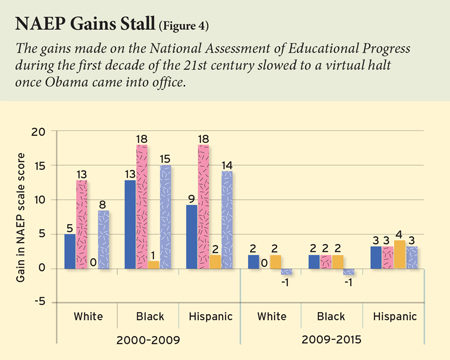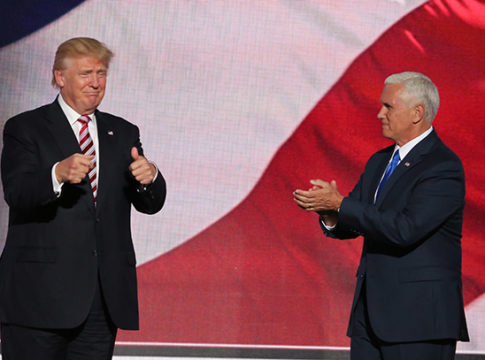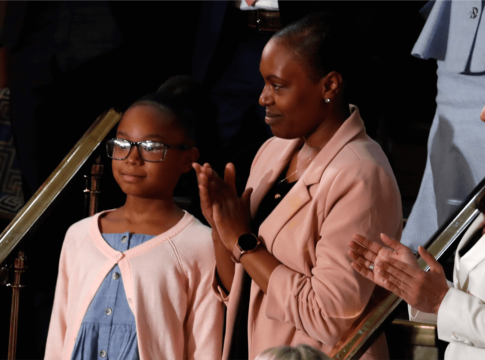
Democratic presidential candidate Joe Biden used a weekend campaign appearance in New Hampshire to offer voters a detailed view of his education policy.
Appearing Saturday afternoon before an overflow crowd of about 300 people at Colby-Sawyer College, the former vice president discussed a wide range of education-related issues, including the benefits of early childhood education, increasing teachers’ salaries, the need to tailor vocational education toward the current job market, and job retraining. The focus on education by Biden and audience members is a reminder that this is a potential wedge issue dividing the Democratic presidential hopefuls.
Biden was introduced by a woman who described her struggles juggling three jobs to pay for her college education. In response, Biden began his talk by asking how many families were having a similar conversation “at the kitchen table this morning” regarding how they couldn’t afford sending a child back “back to UNH” or other colleges across the nation. That led Biden to discuss his own “lower middle class” upbringing and the sacrifices his father made to raise his family. After segueing into other topics, he returned to education policy in response to the first audience question from a woman who introduced herself “as someone who didn’t get past the 8th grade,” and instead earned her G.E.D. She asked Biden what he would do to help teachers and administrators “provide the education our children deserve.” That prompted Biden to launch a nearly 10-minute discussion of his education platform.
He began by reminding his audience that his wife Jill “still teaches fulltime at community college” — a position she held while Biden was vice president. “Teaching is not what she does,” Biden remarked, “It’s who she is.” He then recited one of her favorite expressions: “Any country that out-educates us is going to out-compete us.” Biden then turned to the need to increase access to higher education. He said that President Obama would frequently turn to him during a State of the Union address and say, “‘And Joe is going to do’ without telling me ahead of time.” Obama then would give “Sheriff Joe” presidential authority to do what was necessary to carry out an assignment. One such task, Biden recalled, was to find out “what the jobs of the future are.” He said he discovered that 6 out of 10 jobs required more than a high school education. “So here’s what I’d do” to make college more accessible. First, he recommends tripling the spending, to $45 billion from the current $15 billion, on Title I schools, which serve under-resourced communities. “If you do that you’re able to do a number of things,” including paying teachers “competitive salaries,” he said. He noted that graduates of Colby-Sawyer specializing in education would make 22% less than those graduating with other degrees. “We have to reward teachers. They are the single most important ingredient we have … because the teachers hold the kite strings” of the children “who will send our national ambitions aloft,” he said.
The increased spending would also allow every child to start school at “three years old, at four years old, at five years old.” Biden clarified that he meant spending on early education, and not “day care centers,” and cited studies showing that students who have early education “increase exponentially their prospects to succeed.”
“Thirdly, we have to think about the jobs that are out there.” He proposes that school districts coordinate with local companies regarding the positions they need filled, and then provide high school students credit for courses taken at community colleges that prepare them to fill those jobs.
“But most of all you hit on something that’s really important: confidence matters.” Biden told the questioner. “The longer you go on without the education you know others have…you lose confidence regarding what you are able to do.” To address this, Biden recommends providing advance placement courses, particularly for schools that are “economically distressed” so that their students can compete with those from communities possessing a broader tax base.
Biden also proposed “right now, to send every person eligible to community college to school for free at $6 billion dollars.” Acknowledging that some would call him a “big spending Democrat,” he claimed that he could pay for the program by eliminating a provision in the tax code—“stepped up basis”—that reduces the tax on qualified inherited stocks, real estate, and other capital assets. That would net the federal government an additional $17 billion in revenue, he said.
Biden concluded his lengthy answer by advocating for job retraining to address the impact of the “fourth industrial revolution,” including automation and artificial intelligence, on middle-age workers. “We used to have just over two years ago 200,000 jobs in retail. They’re all gone now” he said, speaking of the impact of Amazon on brick and mortar stores. “What do they do now?…Talk about depression!” he said, citing the high rate of suicide and drug abuse among those aged 45 to 55. “There’s more to say,” he concluded, “but I’ve already said too much.”
Biden has touted his electability, in part because of what he argues are more moderate policies compared to those of his Democratic rivals. This includes his education platform. However, that platform comes with a hefty price tag. According to his campaign, it would cost an estimated $75 billion across 10 years. This includes programs he did not discuss during Saturday’s event, such as a loan forgiveness program for students who take public service jobs, new spending to improve college access for low-income individuals, minorities and undocumented immigrants, and an expanded Pell Grant program. Nonetheless, it is still less than the estimated trillion dollar plus cost of the education programs his more progressive rivals Senators Elizabeth Warren and Bernie Sanders are proposing. Those programs include four years of free college tuition and the almost or complete elimination of all student debt. Because Biden’s proposals would fill part of a gap created by a reduction in education spending by states in recent years, moreover, some voters might find their cost acceptable. Polls suggest that aspects of Biden’s education plan, particularly spending on early childhood education, which is backed by most of the Democratic candidates for president as well, can attract bipartisan voter support. It remains unclear, however, whether a Democratic Party that appears to have moved left on a range of issues since Biden left office still has room for his brand of education policy.
Matt Dickinson is a professor of political science at Middlebury College. His blog is Presidential Power.





